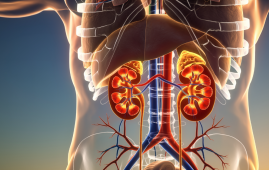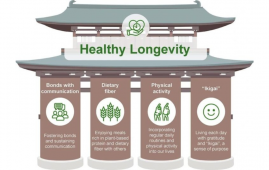

Elika Bergelson, an associate professor of psychology at Harvard, researches how newborns and infants learn language from their surroundings. The developmental psychologist works specifically to disentangle the numerous ideas that explain the onset and eventual mastery of language comprehension and production.
Bergelson’s most recent article, published in the Proceedings of the National Academy of Sciences this month, demonstrates a more worldwide approach to formulating and testing such theories.
The report, co-authored by Alejandrina Cristia of École Normale Supérieure, PSL University, and 11 others, is based on an extraordinarily large sample of two- to 48-month-olds. A day’s worth of audio recordings recorded the babbling and baby talk of 1,001 youngsters from 12 different nations and 43 different languages. Machine learning was used to finish the analysis.
Age, clinical characteristics such as infancy or dyslexia, and the amount of speech infant get from their surroundings are found to be the most important determinants of language development. In contrast to prior study, no impacts associated to gender, multilingualism, or socioeconomic status were discovered.
The study was able to simultaneously consider many variables that are usually looked at separately while also considering how big their effects were. “Notably, it wasn’t just child factors like age or risk for language delay that mattered, but a key environmental factor too: how much speech infants heard from adults,” Bergelson said. “For every 100 adult vocalizations infants heard per hour, they produced 27 more vocalizations themselves, and this effect grew with age.”
The work also touches on well-worn critiques of low-income parents and caregivers. “There’s been much debate and discussion in the literature in recent years about how socioeconomic status does or doesn’t link to language input and language output,” noted Bergelson. “We looked in many, many, many different ways … In no form did we ever find evidence that moms with more education had kids who produced more speech in these tens of thousands of hours of recordings from daily life?”
more recommended stories
 High-Intensity Training and Oxidative Stress Insights
High-Intensity Training and Oxidative Stress InsightsNew Evidence Linking High-Intensity Training and.
 36-Week Pre-eclampsia Screening May Reduce Term Risk
36-Week Pre-eclampsia Screening May Reduce Term RiskA New Preventive Strategy for Term.
 Cardiovascular Risk and Sudden Cardiac Death in Diabetes
Cardiovascular Risk and Sudden Cardiac Death in DiabetesRising Sudden Cardiac Death (SCD) Risk.
 Poor Kidney Function and Alzheimer’s Biomarkers Explained
Poor Kidney Function and Alzheimer’s Biomarkers ExplainedPoor kidney function may influence levels.
 Perinatal Mental Health Challenges Highlighted in New Study
Perinatal Mental Health Challenges Highlighted in New StudyMental Health Challenges in New Parents:.
 Walking Speed Before Hip Replacement Predicts Recovery
Walking Speed Before Hip Replacement Predicts RecoveryNew Evidence Points to a Simple,.
 Neuroblastoma Drug Combo Extends Survival in Models
Neuroblastoma Drug Combo Extends Survival in ModelsA Promising Shift in High-Risk Neuroblastoma.
 How Soybean Oil Impacts Weight Gain and Metabolism
How Soybean Oil Impacts Weight Gain and MetabolismWhy Soybean Oil May Affect Metabolism.
 Coffee and Cognitive Function: Evidence Review
Coffee and Cognitive Function: Evidence ReviewA new narrative review in Cureus.
 World Summit Outlines Core Principles for Healthy Longevity
World Summit Outlines Core Principles for Healthy LongevityWhy Healthy Longevity Demands a New.

Leave a Comment